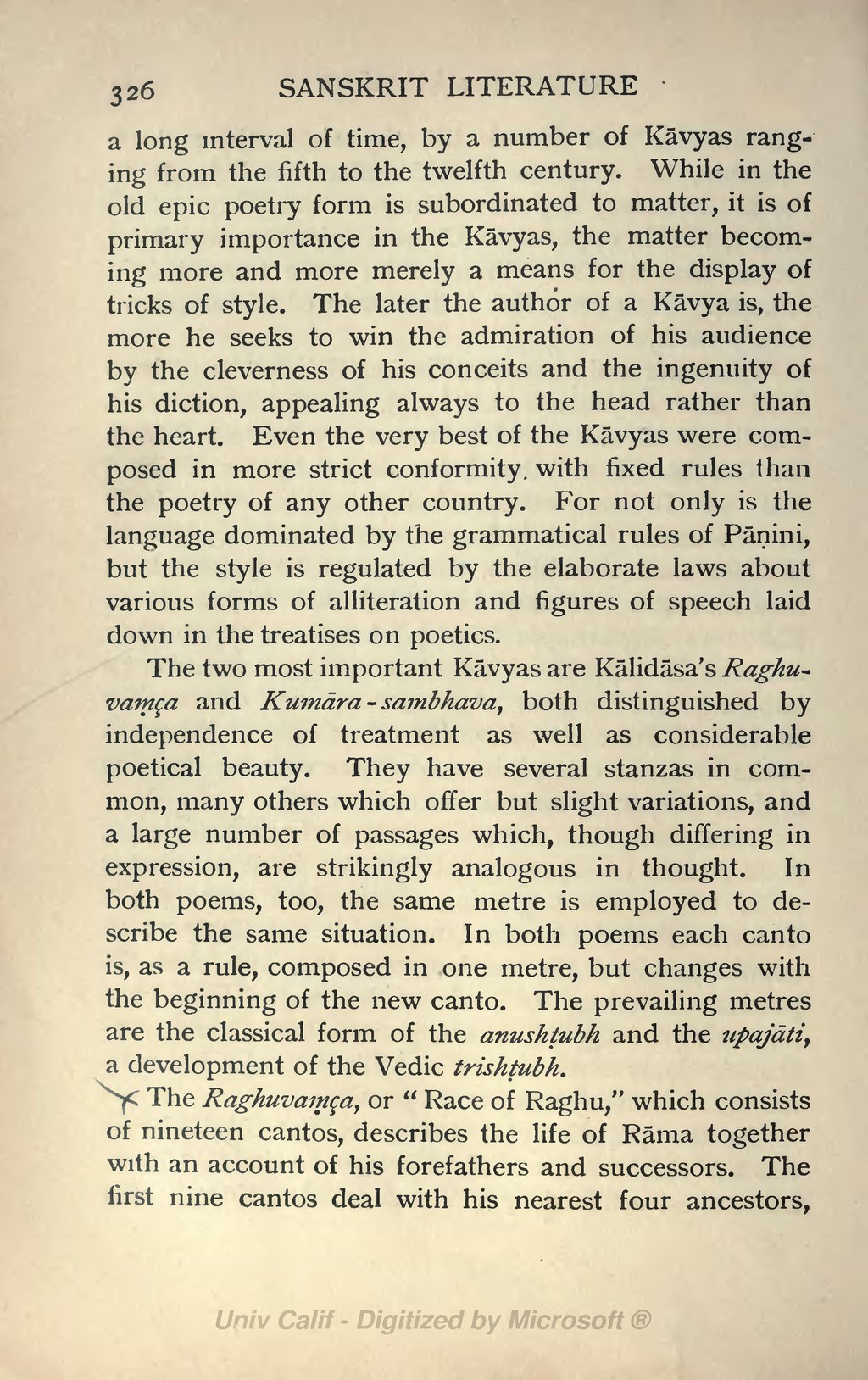a long interval of time, by a number of Kāvyas ranging from the fifth to the twelfth century. While in the old epic poetry form is subordinated to matter, it is of primary importance in the Kāvyas, the matter becoming more and more merely a means for the display of tricks of style. The later the author of a Kāvya is, the more he seeks to win the admiration of his audience by the cleverness of his conceits and the ingenuity of his diction, appealing always to the head rather than the heart. Even the very best of the Kāvyas were composed in more strict conformity with fixed rules than the poetry of any other country. For not only is the language dominated by the grammatical rules of Pāṇini, but the style is regulated by the elaborate laws about various forms of alliteration and figures of speech laid down in the treatises on poetics.
The two most important Kāvyas are Kālidāsa's Raghuvaṃça and Kumāra-sambhava, both distinguished by independence of treatment as well as considerable poetical beauty. They have several stanzas in common, many others which offer but slight variations, and a large number of passages which, though differing in expression, are strikingly analogous in thought. In both poems, too, the same metre is employed to describe the same situation. In both poems each canto is, as a rule, composed in one metre, but changes with the beginning of the new canto. The prevailing metres are the classical form of the anushṭubh and the upajāti, a development of the Vedic trishṭubh.
The Raghuvaṃça, or "Race of Raghu," which consists of nineteen cantos, describes the life of Rāma together with an account of his forefathers and successors. The first nine cantos deal with his nearest four ancestors,
